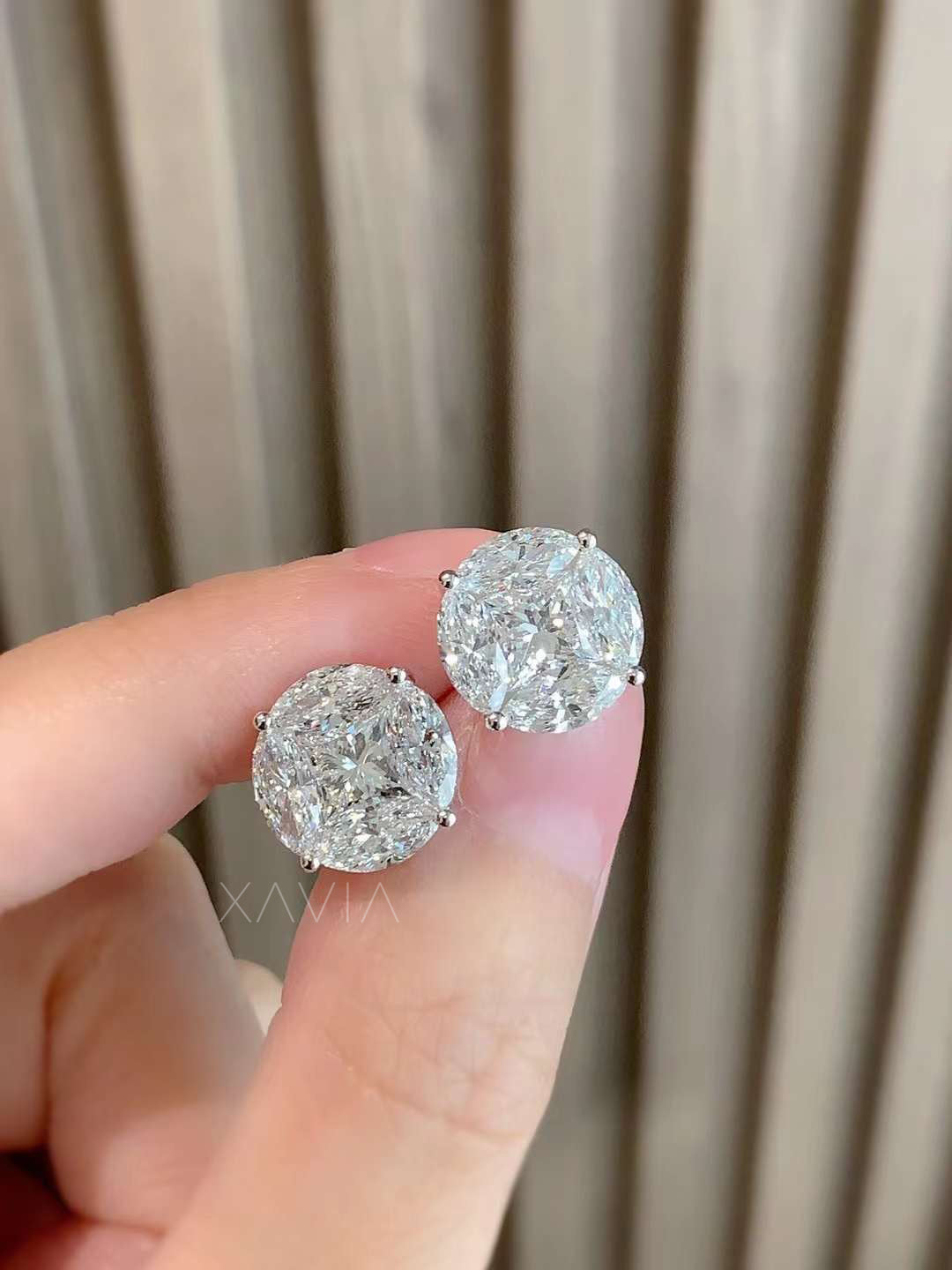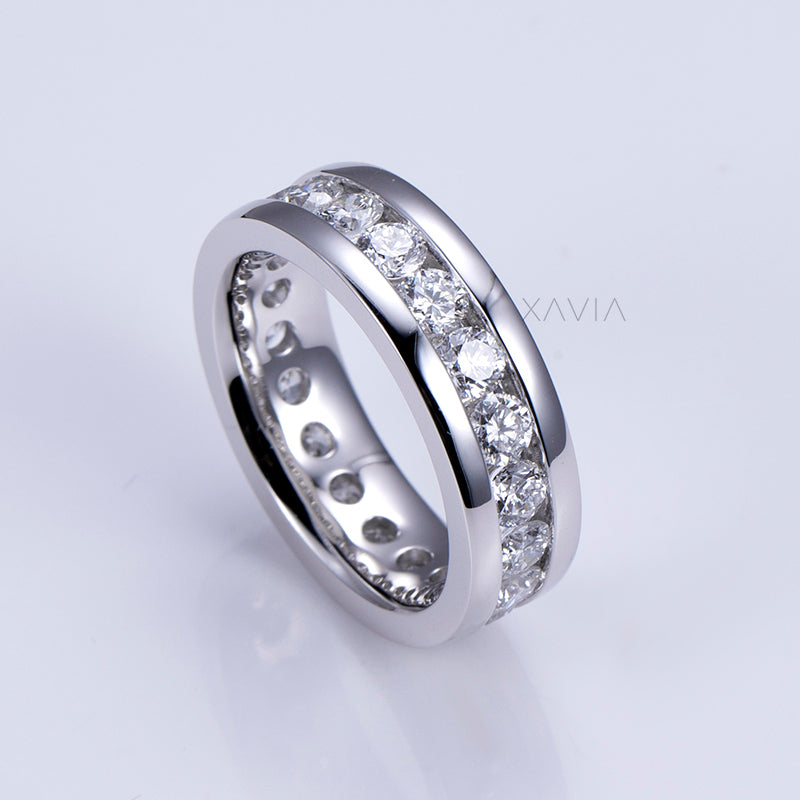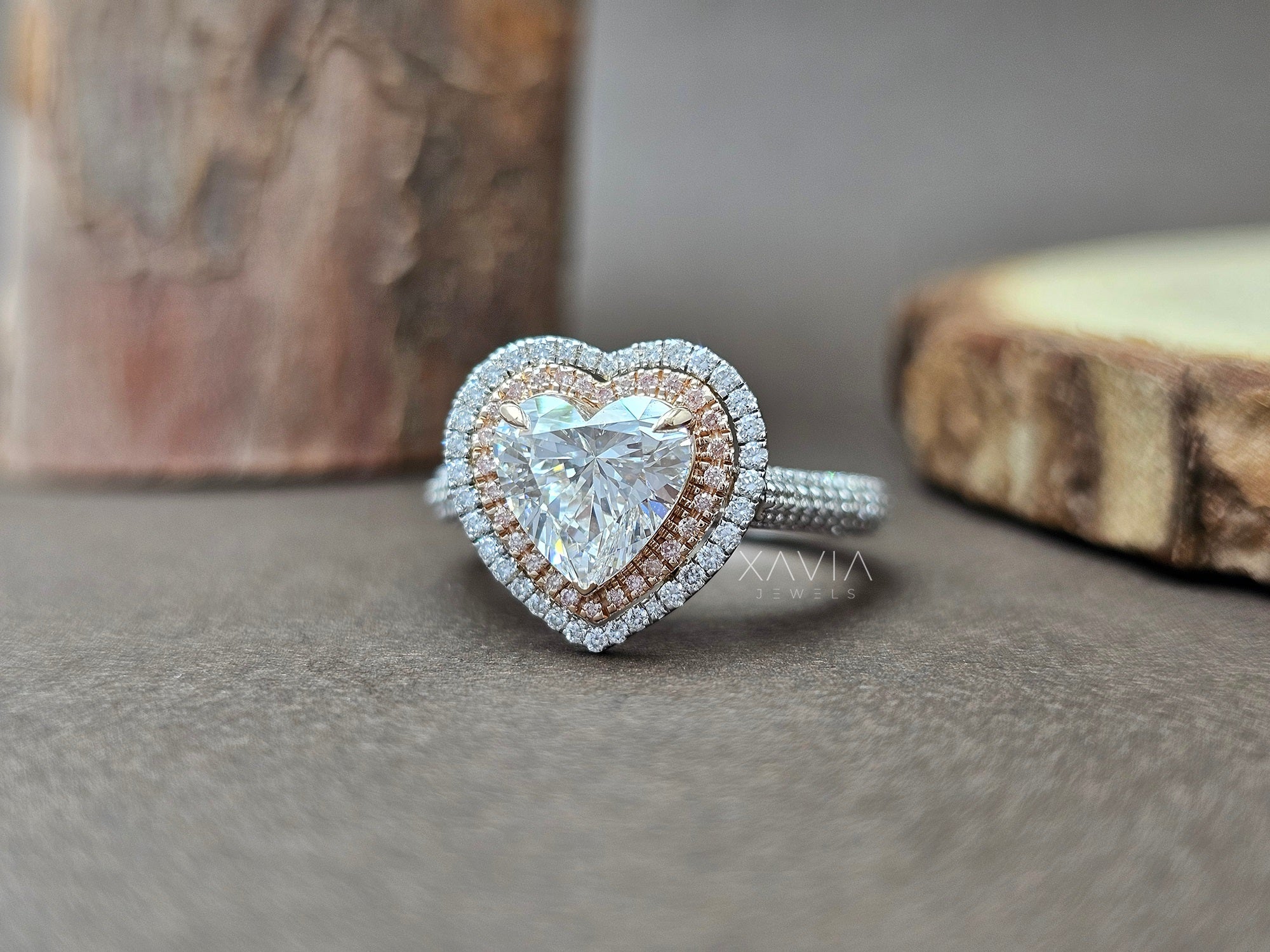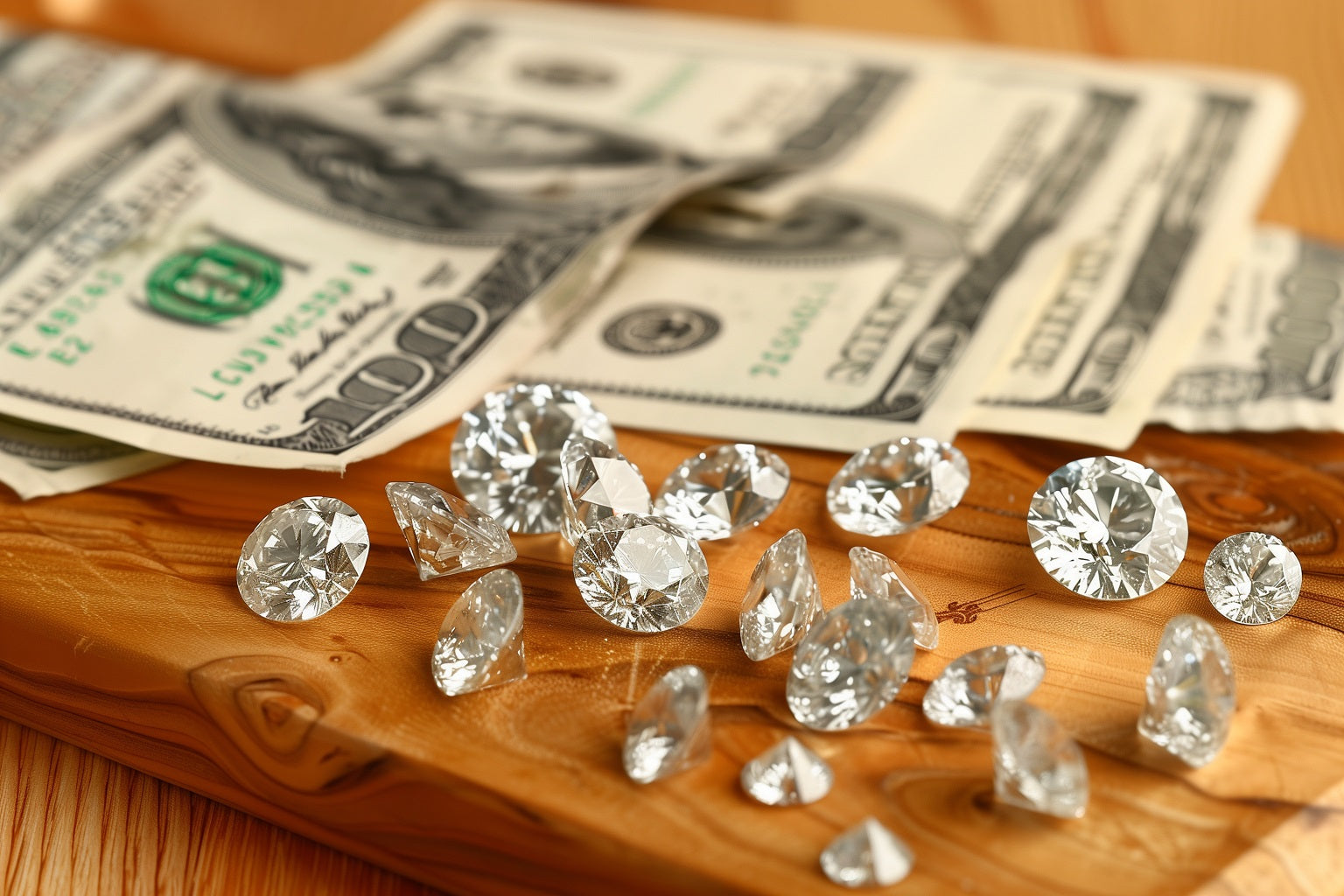Wait... Aren’t Lab-Grown Diamonds Supposed to Be Cheaper?
If you’re shopping for a lab-grown diamond in 2025, you might be surprised—and even a little confused—by what you find. Some 1-carat lab diamonds cost as little as $500… others top $1,500. Round cuts are still the most expensive. Pears and ovals? Way more affordable. Oh, and resale value? Not what most expect.
This isn’t just another price list. It’s a full-spectrum look at the real cost of lab-grown diamonds today, including why prices are falling, where the best value lies, and how to shop smart in a market full of noise.
Whether you’re planning a proposal or simply weighing options, this guide will help you make a confident, informed, and meaningful choice.
What Do Lab-Grown Diamonds Cost in 2025?
Lab-grown diamonds are priced based on the same 4Cs as natural stones—carat, cut, color, and clarity—but with a drastically different price curve.
Here’s what real-time 2025 data tells us:
| Carat Size | Average Price (USD) | Monthly Change |
|---|---|---|
| 0.5 ct | $315 | ↓ 2.5% |
| 0.9 ct | $449 | ↓ 6.3% |
| 1.0 ct | $548 | ↓ 4.5% |
| 1.5 ct | $816 | ↓ 3.7% |
| 2.0 ct | $1,127 | ↓ 5.8% |
💡 Pro Tip: Lab diamond prices fluctuate monthly. In general, pricing has dropped 74% since 2020—making them 80–85% cheaper than natural diamonds in the same category.
Why Are Lab-Grown Diamond Prices Dropping So Fast?
This isn’t a fluke. The price drop is the result of several forces converging:
1. Massive Production Scale
Advances in CVD (Chemical Vapor Deposition) and HPHT (High Pressure High Temperature) technology have made lab-grown diamond creation faster, cheaper, and more scalable than ever.
2. Retail Oversaturation
With more labs and retailers offering lab-grown stones—including De Beers’ Lightbox at $500/ct—competition has pushed prices downward.
3. Consumer Demand Shift
Buyers want bigger stones at better prices. Lab-grown options satisfy that desire, but the influx of supply continues to outpace demand, keeping costs low.
✅ Bottom line: Lower prices do not mean lower quality. They reflect a maturing, more accessible market.
What Makes Some Lab Diamonds Still So Expensive?
Not all lab-grown diamonds are created equal. A stone’s price depends heavily on quality, cut, and certification.
-
A 1-carat J/SI1 round may cost ~$500
-
A 1-carat D/VVS1 oval may cost ~$1,500+
Factors that influence premium pricing:
-
Color grade: D, E, and F are “colorless” and command more value
-
Clarity: VVS1 and IF are exceptionally clean
-
Cut quality: Ideal/Excellent cuts maximize brilliance and price
-
Shape: Round cuts cost more to produce than pears, ovals, or cushions
-
Certification: Stones graded by GIA or IGI tend to be trusted—and priced higher
Shape Secrets: Which Cuts Give You More Diamond for Less
Want more visual impact without more dollars? Shape matters.
Here’s how 1-carat shape pricing compares:
| Shape | Avg. Price (1ct) |
|---|---|
| Round | $538 |
| Oval | $582 |
| Emerald | $529 |
| Cushion | $529 |
| Pear | $532 |
| Princess | $577 |
💎 Fancy shapes = better value
Ovals, pears, and cushions often appear larger on the hand—and cost less per carat.
The Resale Myth: Why Lab-Grown Diamonds Aren’t About Investment
Let’s be honest: lab-grown diamonds don’t hold resale value the way natural diamonds (sometimes) do.
-
Most resell for 20–30% of their original retail price
-
Natural stones may retain 40–60%, depending on rarity and market conditions
-
There’s no robust secondhand market yet for lab-grown stones
💬 But here's the emotional truth: Most people don’t buy diamonds to sell them later. They buy them to symbolize love, legacy, and intention.
Are Lab-Grown Diamonds Really Sustainable?
While lab-grown diamonds are conflict-free and mine-free, not all of them are truly eco-friendly.
Some are created in labs powered by coal-burning plants, especially in China or India. Others, like VRAI, are produced with 100% hydropower.
To ensure sustainability:
-
Ask where and how the diamond was grown
-
Look for transparent certifications
-
Don’t assume “lab-grown” always means “green”
Xavia only works with ethically focused, third-party certified partners using clean energy processes whenever available.
How to Shop Smart for a Lab Diamond in 2025
If you’re ready to buy, here are tips to get the most beauty, value, and meaning for your money:
✅ Go for 0.9 carats instead of 1.0 – visually similar, 10–15% cheaper
✅ Choose a fancy shape – ovals, pears, and cushions give more spread
✅ Prioritize cut – brilliance and fire matter more than size
✅ Check the cert – always ask for IGI, GIA, or GCAL certification
✅ Buy from a jeweler you trust – not all “discount” diamonds are equal
So… Are Lab-Grown Diamonds Still Worth It in 2025?
If you want a stone that sparkles just as beautifully as a mined diamond…
If you want to maximize size without compromising quality…
If you want to feel good about the origin of your diamond…
Then yes — lab-grown diamonds in 2025 are not just worth it — they’re a revelation.
And with prices this accessible, there’s never been a better time to buy.
💬 Let’s Make Your Diamond Mean Something More
Xavia Jewels proudly offers certified, ethical lab-grown diamonds with custom design services tailored to your vision, your values, and your budget.
Want help finding your perfect stone at the perfect price?
👉 Start your custom journey here →
❓ Frequently Asked Questions (FAQs)
1. Are lab-grown diamonds really cheaper than natural diamonds?
Yes — as of 2025, lab-grown diamonds are typically 75–85% less expensive than natural diamonds of similar size and quality.
2. Why have lab-grown diamond prices dropped so much?
Prices have fallen due to technological advancements, increased supply, and growing competition in the jewelry market.
3. What affects the price of a lab-grown diamond?
The 4Cs (carat, cut, color, clarity), certification, shape, and polish all impact the final price.
4. Do lab-grown diamonds have any resale value?
Lab-grown diamonds currently have limited resale value—usually around 20–30% of the purchase price.
5. Are lab-grown diamonds sustainable?
Some are, but not all. Look for those produced with renewable energy sources and clear ethical practices.
6. What’s the smartest way to shop for a lab diamond in 2025?
Go fancy shape, check certification, prioritize cut over carat, and partner with a brand you trust—like Xavia.





